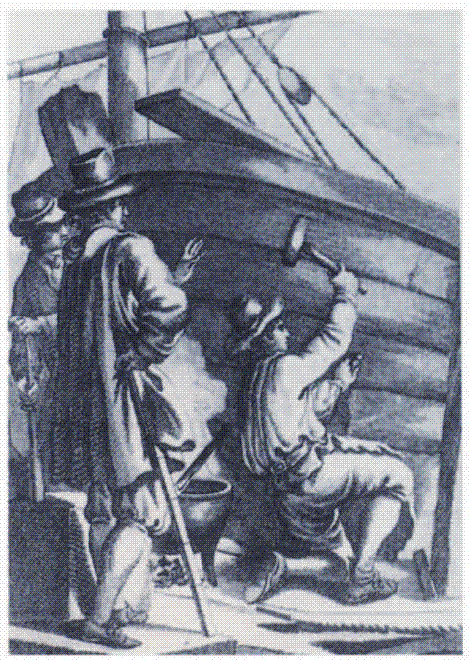his anonymity was strictly adhered to, and the breaking of it was stipulated to be a capital offence.
The first foreign city to be visited was Riga, where the reception by the Swedish rulers was less than warm. From there, the journey took them to Poland and Prussia, where the legation was more successful. From Königsberg (later Kaliningrad) the legation set sail for Holland, only to be stopped by corsairs plundering in the name of the King of France. The group therefore travelled over land, trying to reach the Dutch Republic as soon as possible. For Peter the Great this was clearly the most important aim of the whole journey. Dutch sea power was at its height, and Dutch merchants dominated international trade and played an important role in the spread of science and technology all over the world.
Besides, Peter already knew a lot of Dutch people: his court-physician, several of his teachers, and many of the traders and craftsmen in Moscow were Dutch. He also knew that both fire-arms production and shipbuilding were extremely advanced industries in the Republic, and he was very interested in the standing army of William iii, the Stadholder-King.
With twelve volunteers Peter sped ahead, and well before the official legation they reached Amsterdam in August 1697. Without much ado Peter passed through this city and went North to Zaandam, famed for its shipyards. Legend has it that, from the boat in which they sailed to Zaandam, Peter spotted a man whom he recognised as a smith. This man, Gerrit Kist, had been working in Moscow, and he was stupefied to see the great Tsar in his own backyard and in the clothes of a common man. Peter persuaded this man to rent him a room in his own humble house in Zaandam and to arrange for Peter to work as a carpenter in one of the shipyards.
Of course Peter's anonymity was of no use under these circumstances. And with his height of over two metres it was even more impossible for him to keep a low profile. After a week Peter was already fed up with the massive attention he attracted, and frustrated at being unable to make these crowds obey him. He left with his retinue and went to Amsterdam. Together with the Great Legation he entered the city on 26 August 1697. Here they were formally received, and burgomaster Nicolaas Witsen was appointed to accompany the legation. This was a good choice for both parties. Witsen had not only visited Moscow on a Dutch embassy in 1665 and even published a book on the Asiatic parts of the Russian Empire, he was also an important humanist scholar and well versed in all things of interest to Peter.
The Tsar and his companions were housed in the buildings of the Dutch East India Company. Especially for the pleasure of the Tsar a new frigate was built in the adjoining shipyard. For three months Peter lived and worked there, eagerly learning everything there was to know about the building and handling of such modern ships. At the same time he followed every activity of his formal legates. On 11 September both the leaders of the Great Legation and Peter met with

Peter the Great working as a carpenter in a Dutch shipyard. Engraving by R. Vinkeles (Stichting Atlas van Stolk, Rotterdam).
Stadholder-King William
iii, and on 25 September they were received by the States-General, the government of the Republic. Formal negotiations lasted for a couple of weeks but were inconclusive. The States-General refused to enter an alliance against the Turks, nor did they want to support the Russians in their war with either money or materials. On 28 October the mission was officially ended.
In other fields the embassy was a great success. Knowledge of all sorts was gathered, craftsmen were enlisted to work in Russia and large quantities of weapons and other goods were purchased and sent East. By invitation of William iii Peter also visited England in January 1698. Here it was especially scientific and theoretical knowledge that attracted his attention. He visited the naval base at Portsmouth and - through a window - he also attended a meeting of Parliament in London. Towards the end of April he sailed back to Holland again, and in the early Summer of 1698 the Great Legation travelled back to Moscow.
lauran toorians
The Peter the Great year opened on September 7, 1996. A book on the Russian-Dutch relationship since the seventeenth century will be published in Dutch, Russian and English in 1997 (further information: tel. +31 70 348 4129).